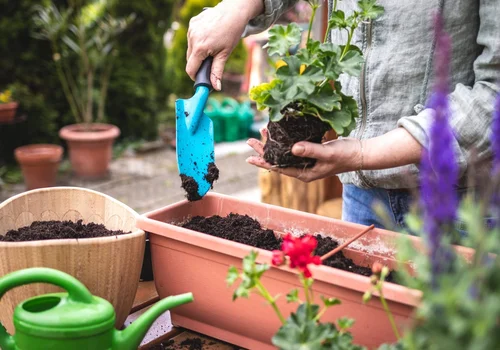Creating a thriving garden requires thoughtful planning and preparation long before planting season. Whether you’re a novice gardener or someone with years of experience, success in gardening often depends on the planning that takes place before the first seeds even touch the soil. In this comprehensive guide, we will walk you through the essential steps to plan your perfect garden, ensuring a bountiful harvest and a beautiful green space.
Laying the Groundwork
The excitement of planning a new vegetable garden is palpable, but before you dive in, it’s important to lay a solid foundation for the space you have available. This involves more than just deciding where the garden beds will go—consider the surrounding area as well. Proper groundwork and thoughtful location selection are key to ensuring the long-term success of your garden.
Choosing the Right Location
One of the most important factors to consider is the location of your garden. Ideally, you’ll want a spot that gets plenty of sunshine, with at least eight hours of direct sunlight each day. However, if your space receives less sunlight, don’t fret—there are still plenty of plants that can thrive in lower light conditions.
Take some time to observe where shadows fall in your garden during the summer months. This will give you an accurate idea of which areas receive the most sunlight, helping you plan accordingly. Soil conditions are equally important; ensure that your garden area doesn’t become waterlogged during wet weather. If you’re dealing with poor drainage, raised beds can help by lifting the planting area above the surrounding ground, improving drainage naturally.
Also, avoid low-lying areas where cold air tends to collect, as these spots can become frost pockets that may damage sensitive plants.
Creating Clear Paths
As your garden expands, accessibility becomes increasingly important. Having clear, well-defined paths is essential for making your gardening tasks easier, whether it’s watering, weeding, or harvesting. Ideally, paths should be wide enough for a wheelbarrow to pass through comfortably.
Bed width is another consideration. It’s best to keep beds no wider than four feet (1.2 meters) so that you can tend to the plants without stepping on the soil. Compacting the soil by stepping on it can negatively affect plant growth. For paths, you can choose bare ground, grass, or a mulch covering. A great option is wood chip mulch, which keeps the path dry and feeds the soil as it decomposes.
Designing Your Garden Plan
When it comes to creating a garden plan, there are three main methods: using paper and pencil, creating a spreadsheet, or using a digital garden planner. Each method has its pros and cons, so choose the one that best suits your preferences.
Traditional Paper and Pencil Planning
Some gardeners prefer the tactile experience of sketching out their garden by hand. This method allows for creativity and flexibility as you can easily erase and redraw your design as it evolves. For many, this approach helps with visualizing the garden layout in a more intuitive way.
Spreadsheet Planning
If you’re more data-driven, using a spreadsheet can help you track each crop in rows and columns. While not as visually intuitive as sketching, this method is efficient for keeping detailed records of your plants.
Digital Garden Planner
For those who prefer a more advanced approach, digital garden planners offer a convenient way to design and organize your garden. With built-in tools like crop rotation and companion planting features, these planners make it easy to adjust your layout and optimize your space for maximum efficiency.
Laying Out the Plants
Once your plan is in place, it’s time to lay out the plants. The first plants to consider are warm-season crops that are sensitive to frost, such as tomatoes and peppers. These plants need the sunniest spot in your garden and should be positioned away from cold winds.

Corn, which benefits from block planting for better pollination, should be placed in a bed that receives ample sunshine. Climbing crops, like beans, should be positioned carefully as they can cast shade over lower-growing plants.
Managing Shade
Be mindful of the shade cast by tall or climbing plants. Once they reach full leaf, they can significantly reduce the sunlight in the areas behind them. If you’re gardening in a hot climate, shady areas can be ideal for growing cool-season crops like broccoli, lettuce, or spinach.
Growing Leafy Greens and Root Vegetables
Leafy greens such as salad greens, spinach, and beets thrive in partial shade, making them perfect for spots that receive less direct sunlight. Root vegetables like carrots, radishes, and onions can also be grown in areas with five or more hours of sunlight.
Planting Tender and Sprawling Crops
Tender crops like squash, zucchini, melons, and sweet potatoes should be planted near the edges of your garden, allowing them to sprawl onto paths or other non-planting areas. This prevents them from overcrowding smaller crops while giving them room to grow.
Crops like onions, potatoes, and other root vegetables prefer at least five hours of sunshine but can still thrive with less sunlight, although they may grow at a slower pace.
Watering and Crop Maintenance
Watering is an essential task for any gardener, especially during hot summers. To reduce the strain of frequent watering, group water-intensive crops together. This allows for more efficient watering and ensures that moisture-loving plants, like celery, are placed in areas of the garden that retain moisture longer.
Convenience is another factor to consider when positioning your crops. Plants that need frequent harvesting, such as herbs, tomatoes, and salad greens, should be planted near the house for easy access.
Incorporating Nectar-Rich Flowers
Don’t forget to include nectar-rich flowers in your garden. Flowers like calendula, nasturtium, and poached egg plant not only add beauty to your garden but also attract beneficial pollinators and pest predators like hoverflies. Companion planting with flowers can improve crop health and increase pollination rates.
Composting and Water Collection
Make room for a compost bin or heap near your vegetable garden. Composting organic material from your garden helps create nutrient-rich soil that can be returned to the garden. Additionally, setting up rain barrels to collect rainwater can help reduce water usage and ensure your garden stays hydrated.
Cold Frames and Greenhouses
For those with the space and budget, cold frames or small greenhouses can be a great addition to your garden. These structures help protect tender seedlings and young plants from cold weather, allowing for earlier planting in the season.
Frequently Asked Questions
- How much sunlight does a vegetable garden need? Ideally, vegetable gardens should receive at least eight hours of direct sunlight each day. However, some crops can still grow with less light, just at a slower pace.
- What are raised beds, and why are they beneficial? Raised beds elevate the planting area above the surrounding ground level, improving soil drainage and making it easier to manage soil conditions.
- How do I prevent my garden from becoming waterlogged? Choose a location with good drainage, and consider using raised beds to help prevent waterlogging during wet weather.
- What is the best way to create garden paths? Garden paths should be wide enough for a wheelbarrow and can be covered with grass, mulch, or paved for easier access.
- How do I manage shade in my garden? Be mindful of where tall plants or climbing crops are placed, as they can cast shade on other plants. Use shade-tolerant crops like leafy greens in areas that receive less sunlight.
- What flowers should I plant to attract pollinators? Nectar-rich flowers like calendula, nasturtium, and poached egg plant are excellent for attracting pollinators and beneficial insects.
- What is companion planting, and how does it work? Companion planting involves growing plants that benefit each other when grown together, such as flowers that attract pollinators or pest predators to your vegetable crops.






